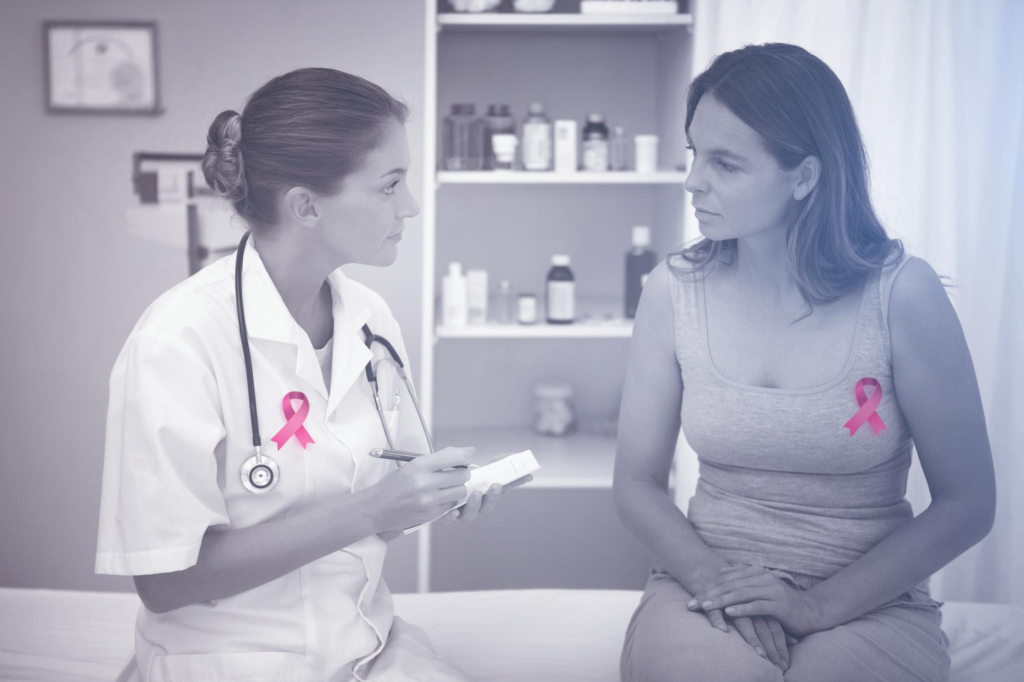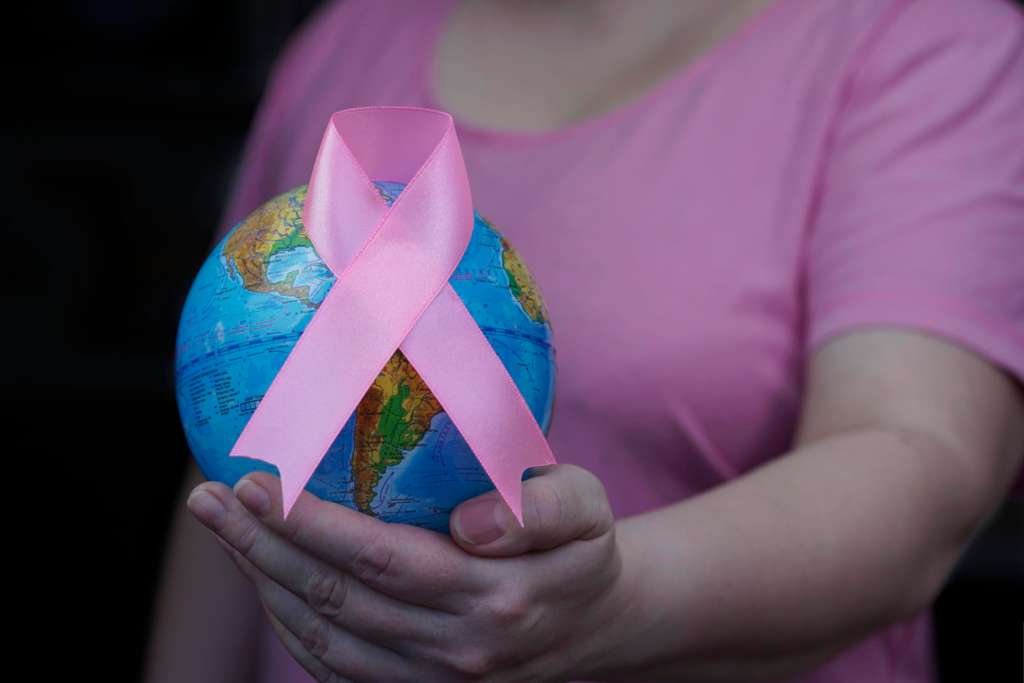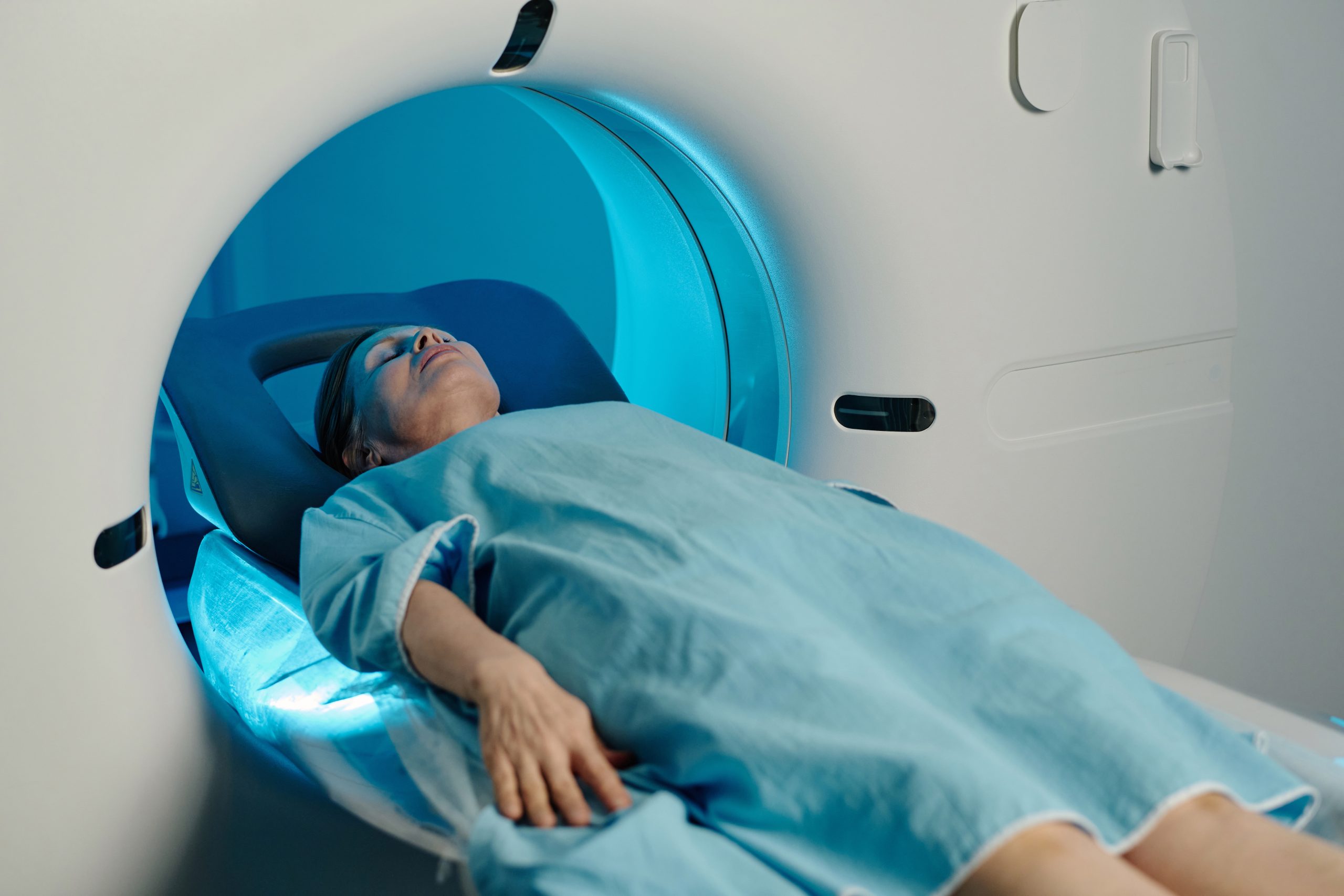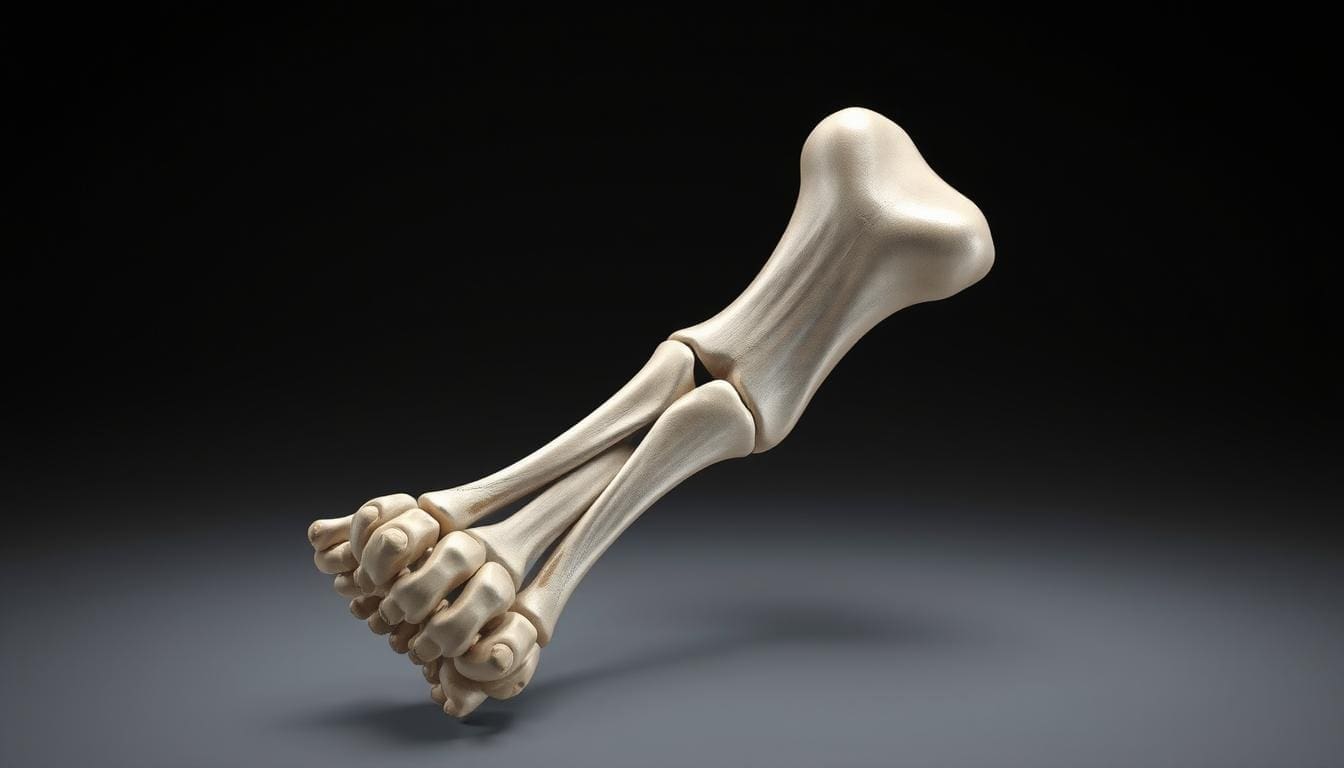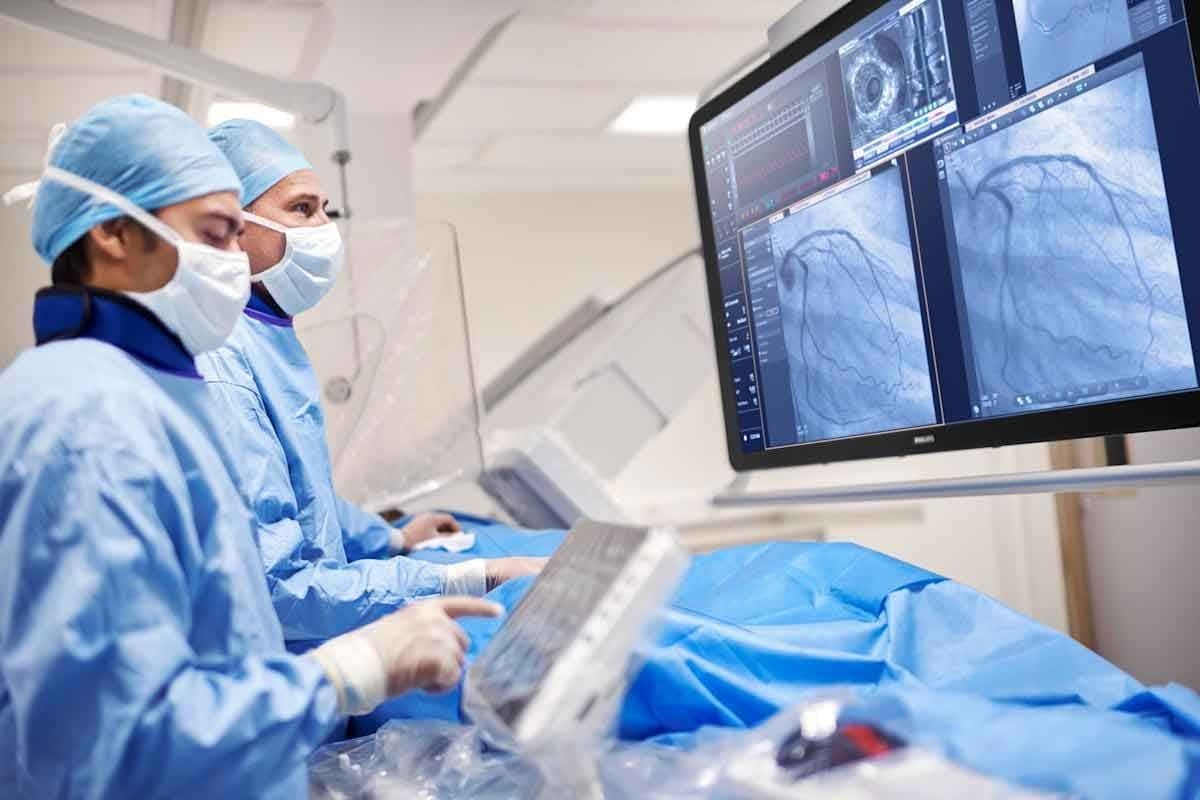Last Updated on November 27, 2025 by Bilal Hasdemir

Breast cancer is a big health issue worldwide, hitting millions of women each year. In 2022, there were 2.3 million new cases and 670,000 deaths reported globally. It’s the most common cancer in women.
It’s key to know global statistics, risk factors, and treatment outcomes. At Liv Hospital, we aim to give full care and support to those with this disease.
We’ll look into the important facts about breast cancer. We’ll cover the key points that help us understand this disease. It affects people and communities all over the world.
Key Takeaways
- Breast cancer is the most common cancer among women globally.
- Understanding risk factors is key for early detection and prevention.
- Global statistics show the big impact of breast cancer on women’s health.
- Improvements in treatment have helped breast cancer patients more.
- Comprehensive care and support are vital for those with breast cancer.
What Is Boob Cancer: Definition and Development
To understand breast cancer, we must first grasp its definition and how it starts. It’s a disease where abnormal cells grow out of control in the breast tissue.
Medical Definition of Breast Cancer
Breast cancer is medically defined as a malignant tumor in the breast tissue. It happens when breast cells grow abnormally and keep going, possibly spreading to other areas.
Common Types and Classifications
Breast cancer isn’t just one disease; it’s many types and classifications. These depend on where the cancer starts, its genetic makeup, and other factors. The main types are:
- Ductal carcinoma: Begins in the milk ducts.
- Lobular carcinoma: Starts in the lobules where milk is produced.
- Inflammatory breast cancer: A rare and aggressive form that causes the breast to become inflamed.
| Type of Breast Cancer | Description | Prevalence |
|---|---|---|
| Ductal Carcinoma In Situ (DCIS) | Non-invasive cancer where cells are contained in the milk ducts. | Common |
| Invasive Ductal Carcinoma (IDC) | Cancer that spreads beyond the ducts into surrounding breast tissue. | Most common type |
| Lobular Carcinoma In Situ (LCIS) | Non-invasive condition where abnormal cells are found in the lobules. | Less common |
How Cancer Cells Form and Spread
Cancer cells form from genetic mutations that mess up normal cell growth. These cells can then invade nearby tissues and spread to other parts of the body through the bloodstream or lymphatic system.
Knowing how breast cancer develops and spreads is key to finding effective treatments. We’ll look at the global impact of breast cancer next.
Global Statistics of Breast Cancer: A Worldwide Epidemic
Breast cancer is a growing concern globally. It’s now one of the most common cancers worldwide. The number of cases keeps going up.
Current Incidence Rates are alarming. Every year, about 2.3 million new cases of breast cancer are diagnosed worldwide. This is a big jump from before, showing how much this disease affects global health.
Current Incidence Rates: 2.3 Million New Cases Annually
There are about 2.3 million new breast cancer cases every year. This number has been going up over time. It’s because of lifestyle changes, better ways to find cancer, and more older people.
Geographical Distribution and Regional Patterns
Breast cancer rates differ a lot around the world. The highest rates are in North America and Western Europe. But, rates are also going up in many low- and middle-income countries.
Many things affect breast cancer rates in different places. Genetics, lifestyle, and healthcare access play big roles. Countries with changing economies are seeing more breast cancer cases. This is likely because of changes in how people live and eat.
Trends in Breast Cancer Prevalence
The global problem of breast cancer is getting worse. An aging world, changes in how people have kids, and more obesity are all contributing. These factors are making breast cancer more common.
Survival rates for breast cancer vary a lot around the world. This is mainly because of differences in getting early detection and treatment. Knowing these trends helps us find ways to fight breast cancer everywhere.
The Human Impact: How Many People Suffer from Breast Cancer
Breast cancer deeply affects people and communities. It touches lives in different age groups and economic levels.
Demographics of Breast Cancer Patients
Breast cancer mainly hits women, but men can get it too. Women under 40 make up a big part of cases. It’s important to look at all demographics to get the full picture.
Key Demographic Factors:
- Gender: Women are more often affected, but men can get it too.
- Age: Most cases are in women over 50, but younger women are at risk too.
- Ethnicity: Different ethnic groups face different risks.
Age Distribution and Risk Correlation
The risk of breast cancer goes up with age, with most cases in women over 50. Younger women, those with a family history, or genetic predisposition are also at risk.
| Age Group | Incidence Rate |
|---|---|
| Under 40 | Less common, often associated with genetic factors |
| 40-49 | Increasing incidence, early screening recommended for high-risk groups |
| 50 and above | Most cases are diagnosed in this age group |
Socioeconomic Factors Affecting Incidence
Socioeconomic status can change who gets breast cancer and how well they do. Healthcare access, lifestyle, and screening awareness differ by economic group. This affects when and how well the disease is caught and treated.
Socioeconomic factors influencing breast cancer incidence include:
- Access to healthcare and screening programs
- Lifestyle factors such as diet and physical activity
- Awareness and education about breast health
Understanding these factors helps us tackle breast cancer’s human impact. We can improve outcomes for everyone affected.
Major Risk Factors: How Can You Get Boob Cancer
Breast cancer risk factors come from genetics, hormones, and lifestyle. Knowing these can help you understand your risk. It also helps you take steps to lower it.
Genetic Predisposition and Family History
Genetic mutations are key in breast cancer risk. Mutations in BRCA1 and BRCA2 genes raise your risk a lot. If your family has a history of breast cancer, you’re at higher risk too.
If you have a strong family history, think about genetic counseling and testing. It can show if you need closer screening and prevention.
Hormonal and Reproductive Influences
Hormones and reproductive factors also affect your risk. Starting menstruation early, stopping later, and having a first child late can increase your risk. Hormone therapy during menopause also raises your risk.
Knowing about these hormonal factors can guide your reproductive and hormone therapy choices.
Lifestyle Factors and Environmental Exposures
Your lifestyle, like diet, exercise, and alcohol, can change your risk. Eating well, staying active, and drinking less can help.
Some environmental toxins and radiation can also raise your risk. Being aware and trying to avoid them is important.
| Risk Factor | Description | Impact on Risk |
|---|---|---|
| Genetic Mutations | BRCA1 and BRCA2 mutations | Significantly increases risk |
| Family History | First-degree relatives with breast cancer | Increases risk |
| Hormonal Influences | Early menarche, late menopause, HRT | Elevates risk |
| Lifestyle Factors | Diet, physical activity, alcohol consumption | Modifiable factors can reduce risk |
Early Detection and Diagnosis of Breast Cancer
Early detection is key in fighting breast cancer. It greatly improves treatment success and survival chances. Knowing about screening methods, symptoms, and diagnostic procedures helps find cancer early.
Screening Methods and Recommendations
Regular screening is essential for catching breast cancer early. Mammography is the most common method. It can spot tumors before they can be felt.
- Mammography: Recommended annually for women over 40.
- Ultrasound: Often used with mammography, for women with dense breasts.
- MRI: Recommended for those at high risk, like BRCA1 or BRCA2 carriers.
| Screening Method | Recommendation | Target Group |
|---|---|---|
| Mammography | Annually | Women over 40 |
| Ultrasound | As needed | Women with dense breast tissue |
| MRI | Annually | High-risk patients |
Symptoms and Warning Signs
Knowing the symptoms and warning signs of breast cancer can lead to early detection. Common signs include:
- A new lump or thickening in the breast or underarm area.
- Change in the size or shape of the breast.
- Dimpling or puckering of the skin.
- Redness or scaliness of the skin.
Diagnostic Procedures and Testing
If a screening test shows a problem, more tests are done. These might include:
- Biopsy: Removing a tissue sample for examination.
- Imaging tests: Like more mammograms, ultrasounds, or MRIs.
- Clinical breast examination: A healthcare provider checks for abnormalities.
Early detection through these steps greatly improves breast cancer outcomes. We urge women to follow screening schedules and watch for any breast changes.
Is Breast Cancer Deadly: Understanding Mortality Risks
It’s important to know the risks of dying from breast cancer. This knowledge helps both patients and doctors. The chance of surviving breast cancer changes based on the cancer’s stage and type.
670,000 Deaths Annually
Every year, about 670,000 people die from breast cancer worldwide. This makes it a top cause of cancer deaths in women. It accounts for about 15% of all cancer deaths globally.
Here’s a table showing breast cancer deaths by region:
| Region | Estimated Breast Cancer Deaths |
|---|---|
| Asia | 250,000 |
| Europe | 140,000 |
| North America | 80,000 |
| South America | 40,000 |
| Africa | 30,000 |
Survival Rates by Stage and Type
Survival rates for breast cancer depend on the stage and type. For example, the five-year survival rate for early-stage breast cancer is about 99%. But for advanced breast cancer, it’s only around 27%. For more info, check out this resource.
The type of breast cancer also affects survival chances. Patients with hormone receptor-positive breast cancer usually have better survival rates. Those with triple-negative breast cancer face tougher challenges.
Factors Influencing Fatality Risk
Several things can change the risk of dying from breast cancer. These include:
- Stage at Diagnosis: Finding cancer early greatly improves chances of survival.
- Type of Breast Cancer: Different types have different survival rates.
- Genetic Mutations: Having certain genetic mutations, like BRCA1 and BRCA2, can impact survival.
- Access to Healthcare: Getting the right treatment on time is key to better survival rates.
Knowing these factors helps patients and doctors work together. Together, they can improve survival chances and lower the risk of dying from breast cancer.
Why Breast Cancer Can Be Fatal: The Metastasis Process
Breast cancer becomes deadly when it spreads to other parts of the body. Metastasis is when cancer cells move from the original site to distant organs.
How Cancer Spreads Beyond the Breast
The metastasis process has several steps. First, cancer cells invade the breast tissue around them. Then, they enter the bloodstream or lymphatic system, heading to other parts of the body.
Once they reach a new spot, these cells can start new tumors. This leads to secondary cancers.
a leading oncologist, explains, “The spread of breast cancer cells depends on the cancer’s genetics and the patient’s health.” This shows how complex metastasis is and why treatments need to be tailored.
Common Sites of Metastasis
Breast cancer often spreads to the bones, lungs, liver, and brain. Bone metastasis can cause a lot of pain and even fractures. Lung metastasis can lead to breathing issues.
Metastasis to the liver and brain can cause serious problems. These include organ failure and brain damage.
Complications of Advanced Disease
When breast cancer spreads, it can cause many problems. For example, bone metastasis can lead to hypercalcemia, or high calcium levels in the blood. Lung metastasis can cause pleural effusion, a fluid buildup around the lungs.
These issues can greatly affect a patient’s life quality and chances of survival.
As noted by
“The metastatic process is a major challenge in breast cancer treatment, requiring a multi-disciplinary approach to manage effectively.”
It’s key to understand metastasis and its complications. This knowledge helps in creating better treatment plans and improving patient results.
Treatment Approaches and Their Effectiveness
Effective treatment of breast cancer needs a mix of methods. We’ll look at the different ways to treat it. We’ll see how well they work and what decides which one to use.
Standard Treatment Protocols
Standard treatments for breast cancer are based on solid evidence. They usually combine local and systemic therapies. The choice depends on the cancer’s stage, the tumor’s features, the patient’s health, and their wishes.
Treatment protocols vary by cancer stage:
- Early-stage breast cancer: Surgery and/or radiation therapy
- Locally advanced breast cancer: Neoadjuvant chemotherapy followed by surgery and radiation
- Metastatic breast cancer: Systemic therapies like chemotherapy, hormone therapy, and targeted therapy
Surgical Options and Considerations
Surgery is key in treating breast cancer, aiming for a cure in early stages. Surgical options include:
- Lumpectomy: Removing the tumor with some normal tissue
- Mastectomy: Taking out the whole breast
- Breast-conserving surgery: Lumpectomy followed by radiation
The right choice depends on the tumor’s size, location, and what the patient prefers.
Medical Therapies: Radiation, Chemotherapy, and Targeted Treatments
Medical therapies are also vital in treating breast cancer. These include:
| Therapy Type | Description | Indications |
|---|---|---|
| Radiation Therapy | High-energy rays to kill cancer cells | After lumpectomy, post-mastectomy in high-risk cases |
| Chemotherapy | Drugs to kill cancer cells | Pre-operative (neoadjuvant) or post-operative (adjuvant) |
| Targeted Therapy | Drugs targeting specific cancer cell characteristics | HER2-positive breast cancer, hormone receptor-positive disease |
Emerging and Innovative Approaches
Breast cancer treatment is always getting better, with emerging approaches showing great promise. These include:
- Immunotherapy: Using the immune system to fight cancer
- Precision medicine: Tailoring treatment to individual tumor characteristics
- New targeted therapies: Targeting specific molecular targets
As research keeps advancing, we’ll see more effective and personalized treatments for breast cancer patients.
Prevention and Risk Reduction Strategies
Preventing breast cancer is key, and knowing how to lower risk is vital. By focusing on lifestyle changes, we can all play a part in reducing breast cancer risk. This includes making healthy choices and managing risk factors.
Modifiable Risk Factor Management
Managing risk factors is a big part of preventing breast cancer. Keeping a healthy weight is important, as extra weight can increase breast cancer risk, more so after menopause. Eating well and staying active helps keep weight in check.
Drinking less alcohol is also important. Alcohol can raise breast cancer risk. Cutting down or stopping alcohol can help lower this risk. Also, avoiding harmful environmental toxins and reducing radiation exposure can help reduce overall risk.
Preventive Medications and Procedures
For those at high risk, preventive medications might be suggested. Medications like tamoxifen and raloxifene can lower breast cancer risk. For those with a high genetic risk, like BRCA1 and BRCA2 carriers, prophylactic mastectomy might be considered.
Lifestyle Modifications for Breast Health
Living a healthy lifestyle is essential for breast health and cancer prevention. Eating lots of fruits, veggies, and whole grains, and staying active are key. Breastfeeding also lowers breast cancer risk, the longer you do it.
Managing stress is also important for overall health and might help lower cancer risk. While the exact link between stress and breast cancer is being studied, taking care of your mental health is a big part of staying healthy.
Conclusion: Facing the Future of Breast Cancer Care
Looking at breast cancer, we see how important awareness, early detection, and new treatments are. Every year, about 2.3 million women worldwide get breast cancer. The numbers vary a lot by region.
In countries like Türkiye, the risk is high. One in 18 women might get breast cancer in their lifetime, studies say. You can read more about this in recent studies.
The outlook for breast cancer care is good. If caught early, survival rates can hit 90%. We’ve made big strides in treatments, like surgery and new medicines. Keeping up the good work in awareness and early detection will help even more.
Looking ahead, we need to keep pushing for better breast cancer care. We should explore new research and ways to improve. This way, we can find breast cancer sooner, treat it better, and lessen its impact.
FAQ
What is breast cancer?
Breast cancer is a disease where cells in the breast grow too much and form a tumor. It starts in the breast tissue.
How common is breast cancer worldwide?
It’s the most common cancer worldwide, with over 2.3 million new cases every year. It affects people of all ages and backgrounds.
What are the major risk factors for breast cancer?
Major risk factors include genetic predisposition, family history, hormonal and reproductive influences, and lifestyle factors like diet and physical activity.
Can breast cancer be prevented?
While some risk factors can’t be changed, managing others, using preventive medications, and making lifestyle changes can help reduce risk.
How is breast cancer diagnosed?
Diagnosis uses screening methods like mammography, ultrasound, and MRI. Diagnostic procedures like biopsy confirm cancer presence.
What are the symptoms and warning signs of breast cancer?
Symptoms include a new lump or thickening, changes in breast size or shape, nipple discharge, and skin changes like redness or dimpling.
Is breast cancer deadly?
Yes, it can be fatal if not caught and treated early. It’s a leading cause of cancer deaths among women, with about 670,000 deaths annually.
How does breast cancer spread?
It spreads through the bloodstream or lymphatic system to other parts of the body, known as metastasis. Common sites include bones, lungs, liver, and brain.
What are the treatment options for breast cancer?
Treatments include surgery, radiation therapy, chemotherapy, targeted therapy, and hormone therapy. These are often used together based on the cancer’s stage and type.
What is the prognosis for breast cancer patients?
Survival rates depend on the stage and type of breast cancer. Early detection and treatment improve outcomes, with many patients surviving long-term.
Are there any emerging treatments for breast cancer?
Yes, new treatments include immunotherapy, precision medicine, and targeted therapies. These are being researched to improve treatment outcomes.
How can I reduce my risk of breast cancer?
A healthy lifestyle helps, including a balanced diet, regular exercise, and avoiding too much alcohol. Managing weight and knowing your family history are also important.
References
- IARC / World Health Organization. pr361_E. https://www.iarc.who.int/wp-content/uploads/2025/02/pr361_E.pdf
- PubMed. (2025). https://pubmed.ncbi.nlm.nih.gov/39994475/
- Nature. s41591-025-03502-3. https://www.nature.com/articles/s41591-025-03502-3
- National Breast Cancer Foundation. Breast cancer facts. https://www.nationalbreastcancer.org/breast-cancer-facts/
- Breastcancer.org. Facts & statistics. https://www.breastcancer.org/facts-statistics


